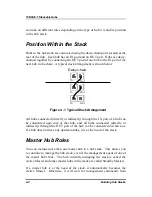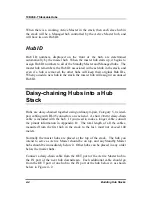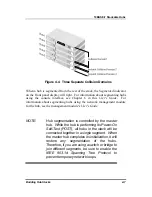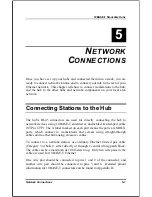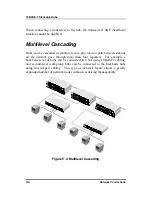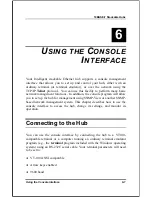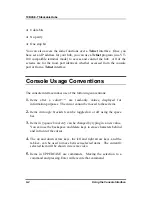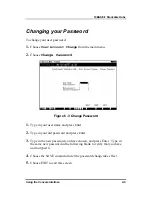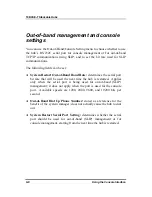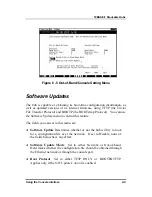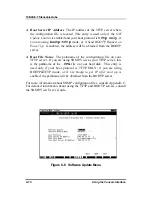
10BASE-T Stackable Hubs
Cascading Hub Stacks
If you need to expand your network beyond an eight-port stack, or you need
to connect your hub to other parts of your network, you can cascade it using
several different network media, including 10BASE-T twisted-pair cabling,
10BASE2 thin coaxial cabling, 10BASE5 thick coaxial cabling, and FOIRL
or 10BASE-FL fiber optic cabling.
When planning your network, it is important to keep the Ethernet
configuration rules in mind. In particular, be sure that there are no more than
four repeaters (including hubs or hub stacks) between any two stations on the
network. Also, be careful that none of the cable links exceed the maximum
length for that type of cable. If you need to exceed the repeater limit, you
can use a bridge or Ethernet Switch to divide the network into separate
collision domains.
Using Twisted-pair Cabling
One way you can connect hubs or 12hub stacks together is by using ordinary
twisted-pair cabling. This is the simplest method, though it has the
disadvantages that the distance between hub stacks can be at most 100
meters, and all but the first and last hubs require two RJ-45 ports each for the
cascade connections.
Twisted-pair cabling is also usually used to connect repeater hubs to Ethernet
switching hubs.
There are two different ways of cascading hubs using 10BASE-T cabling.
The first way is to use a crossover cable, which connects the transmit of one
hub to the receive of the other, and vice versa. A crossover cable can be
made easily, as explained in Appendix D.
A more convenient method is to use the hub's Uplink switch. The Uplink
switch lets you use Port 1 as either an ordinary MDI-X port for connecting to
a server or workstation, or as an MDI port for connecting to another hub.
Network Connections
5-3






